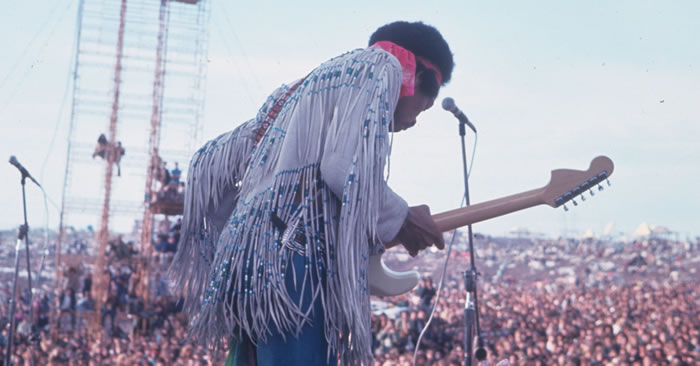O say did you see the Ford Library's “Banner Moments: The National Anthem in American Life”?

“O say can you see” takes on a whole new meaning at the Gerald R. Ford Library’s Banner Moments: The National Anthem in American Life.
Part of the presidential libraries system of the National Archives and Records Administration, the Ford Library collects, preserves, and makes accessible a rich body of archival materials focusing on the Ford presidential administration. The Library also hosts a series of temporary exhibits that focus on American history.
This exhibit -- curated and organized by University of Michigan musicologist Mark Clague and Bettina Cousineau, exhibit specialist at the Ford Library and Ford Museum -- traces the 200-year history of America’s national anthem through 10 interpretive panels and four display cases filled with historical documents.
And what a busy 200 years it has been.
In a recent interview, music professor Clague dispelled a number of common myths about the anthem as well as a clarification of the anthem’s place in American history.
First (and foremost), Francis Scott Key did not nick the “The Star-Spangled Banner” melody from a drinking song. As Clague recounts, the lyrics of “The Star-Spangled Banner” were set to a popular tune written for the London-based Anacreontic Society gentlemen's club of amateur musicians by British composer John Stafford Smith. Originally entitled “To Anacreon in Heaven” (or, as more popularly nicknamed, “The Anacreontic Song”), the 1773 melody would have been known at the time Key wrote his lyrics to the anthem in 1814.
Second (and equally significant), the words for “The Star-Spangled Banner” were not written as a poem. As Clague points out, the lyrics to the song (through four verses) were consciously set by Key to fit “The Anacreontic Song.”

Also, through the last two centuries “The Star-Spangled Banner” has been modified no less than 73 times (by Clague's count) with 120 differing lyrics to fit particular political and social stresses.
The song was written on September 14, 1814, by the 35-year-old lawyer and amateur poet Francis Scott Key after witnessing the bombardment of Fort McHenry in Baltimore Harbor by British ships during the Battle of Baltimore.
On September 13, Key was on a prisoner exchange when he and his fellow American lawyer John Stuart Skinner were detained by the British. It was feared that Key and Skinner had overheard details for an attack on Baltimore. Key was held aboard the HMS Surprise and transferred to the HMS Minden where he witnessed the bombardment of Fort McHenry and saw the fort’s battle flag during the conflagration. The next day, the fort’s larger flag went up and showed that the structure had withstood the bombardment. The rest, as they say, was history.

“Key didn’t set out to write an anthem," says Clague. “He was inspired to write a great song. ... You really can’t write an anthem. Anthems are born. They’re not made.”
Clague pointed out that some of the song's original lyrics would be controversial today because of their expression of American racial politics at the time. In the original third stanza, Maryland slaveowner Key wrote angrily about the ex-slaves and "hirelings" who fought on the side of the British:
And where is that band who so vauntingly swore,
That the havoc of war and the battle’s confusion
A home and a Country should leave us no more?
Their blood has wash’d out their foul footstep’s pollution.
No refuge could save the hireling and slave
From the terror of flight or the gloom of the grave,
And the star-spangled banner in triumph doth wave
O’er the land of the free and the home of the brave.
And during World War I, where Great Britain and America were allies, other words were dropped from the song because of the vitriol they expressed toward the British during the War of 1812.
But despite the song's complicated history, the plasticity of its meaning contributed to its longevity. And therein lays the greatness of Clague’s decade-long effort in charting the history of Key’s masterwork. The better part of four display cases in Banner Moments are devoted to the written historic transition of “The Star-Spangled Banner.” With facsimiles ranging from the song’s first 1814 printed sheet-music version by Carrs Music Store in Baltimore to examples of 20th-century interpretations by popular musicians Jose Feliciano and Jimi Hendrix, Clague makes it possible to trace the song’s development through its many guises.
Clague points out that even though Key would have seen himself as a Marylander first, the song commemorates a pivotal moment in American history when saluting the flag became a national rather than sectional patriotism.
“There have always been calls for another national anthem,” says Clague. “The song, after all, was only designated as the national anthem in 1931. Among rivals are 'America the Beautiful,' 'My Country, 'Tis of Thee,' 'God Bless America,' and 'Hail, Columbia.' And maybe we will have a new national anthem when we have a new sense of identity as Americans. But a 200-year cultural tradition is going to be very difficult to uproot.”
John Carlos Cantú has written on our community's visual arts in a number of different periodicals.
Gerald R. Ford Library: “Banner Moments: The National Anthem in American Life” will run through August 28, 2017. The Gerald R. Ford Presidential Library, located at 1000 Beal Ave. The Library is open Monday-Friday, 8:45 am–4:45 pm. For information, call 734-205-0555. For more information on the history of our national anthem, listen to Mark Clague’s Star-Spangled Bannercasts.


































